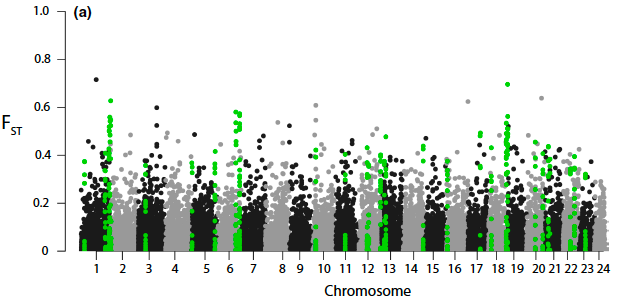Speciation in the marine environment is challenged by the wide geographic distribution of many taxa and potential for high rates of gene flow through larval dispersal mechanisms. Depth has recently been proposed as a potential driver of ecological divergence in fishes, and yet it is unclear how adaptation along these gradients’ shapes genomic divergence. The genus Sebastes contains numerous species pairs that are depth-segregated and can provide a better understanding of the mode and tempo of genomic diversification. Here, we present exome data on two species pairs of rockfishes that are depth-segregated and have different degrees of divergence: S. chlorostictus–S. rosenblatti and S. crocotulus–S. miniatus. We were able to reliably identify “islands of divergence” in the species pair with more recent divergence (S. chlorostictus–S. rosenblatti) and discovered a number of genes associated with neurosensory function, suggesting a role for this pathway in the early speciation process. We also reconstructed demographic histories of divergence and found the best supported model was isolation followed by asymmetric secondary contact for both species pairs. These results suggest past ecological/geographic isolation followed by asymmetric secondary contact of deep to shallow species. Our results provide another example of using rockfish as a model for studying speciation and support the role of depth as an important mechanism for diversification in the marine environment.

Speciation genomics and the role of depth in the divergence of rockfishes (Sebastes) revealed through Pool-seq analysis of enriched sequences
Olivares-Zambrano D, Daane JM, Hyde J, Sandel MW, Aguilar A.
2022.
Ecology and Evolution 10:39-62